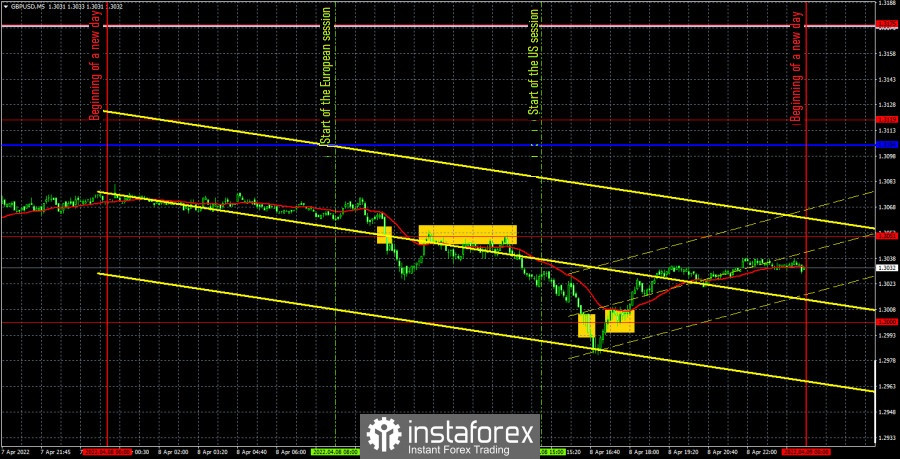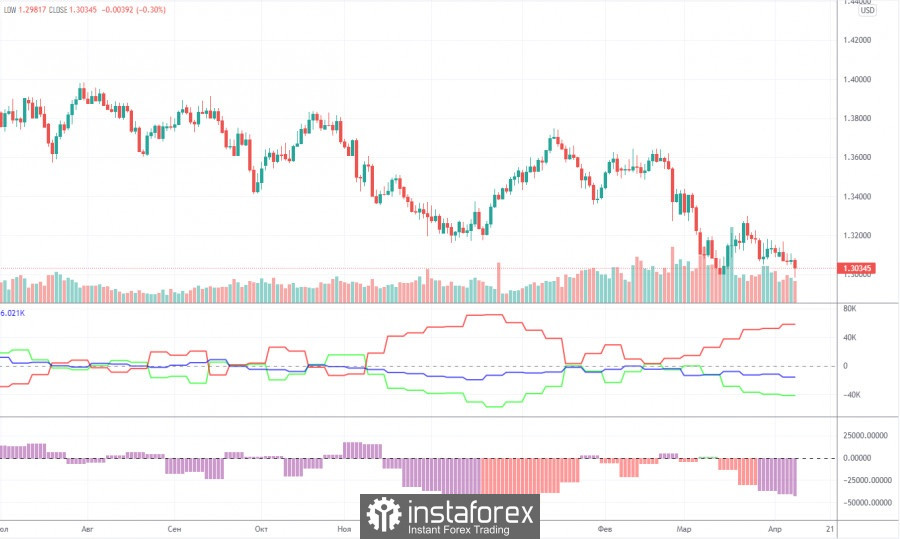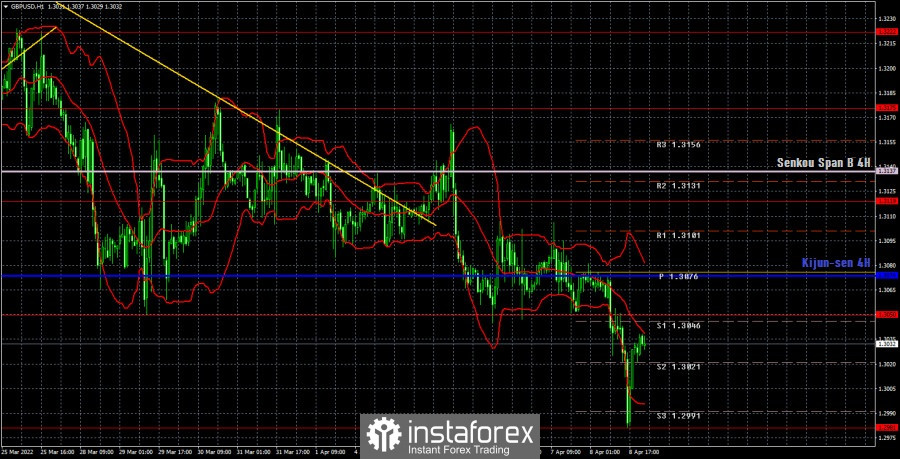GBP/USD 5M

The GBP/USD currency pair fell by another 93 points on Friday, but by the end of the day and week it was still able to partially recoup losses. However, what difference does it make what the rollback was on Friday evening? The pound still maintains no less strong downward movement than the euro. For several weeks, the pound/dollar pair could not decide on the direction of movement, but after overcoming the level of 1.3050, the worst fears were confirmed. The pound as a whole is falling for the same reasons as the euro. The geopolitical situation in Eastern Europe is not improving. EU countries and the UK continue to impose all kinds of sanctions against Russia, which will also affect their own economies. Moreover, it is completely unclear to what values oil, gas, coal and various raw materials will rise in price. After all, inflation rates in the US, the UK and the EU depend on these values. Inflation data for March will be released in Britain and the United States this week, and both indicators may grow again in comparison with February values. And the monetary policy of both central banks will depend on the values of inflation.
There were few trading signals on Friday. The first two sell signals duplicated each other: first, the pair settled below the level of 1.3051, and then rebounded from it from below. Thus, either in the first or in the second case, it was necessary to open short positions. Then the pair dropped to the level of 1.3000, settled below, but could not continue the fall and returned to the area above 1.3000. Thus, the short position should be closed after consolidating above the 1.3000 level. At the time of the formation of the buy signal, it was already quite late, so it could no longer be worked out. But even if traders opened a long position, it turned out to be profitable in any case. As is the short position.
COT report:

The latest Commitment of Traders (COT) report on the British pound showed minimal changes in the mood of major players. For a whole week, the non-commercial group opened 5,200 long positions and 6,900 short positions. Thus, the net position of non-commercial traders decreased by 1,700. Even for the pound, such changes are insignificant. In general, the non-commercial group still has almost 2.5 times more contracts for shorts than longs. This means that the mood of professional traders is now "pronounced bearish". Thus, this is another factor that speaks in favor of the continuation of the pound's fall. The situation with COT reports for the pound is completely different than for the euro. According to the pound, the mood of the major players changes every couple of months, and sometimes even more often. At this time, the net position of the non-commercial group has already fallen to the levels where the last round of the pound's fall ended (the green line on the first indicator). Thus, we can even assume that in the coming weeks the pound will try to start a new ascent. However, the current fundamental and geopolitical background does not give good reasons to expect a strong growth of the British currency. Even taking into account the rate increase by the Bank of England.
We recommend to familiarize yourself with:
Overview of the EUR/USD pair. April 11. The presidential election in France may change the mood within the European Union.
Overview of the GBP/USD pair. April 11. Key events of the week: US and British inflation.
Forecast and trading signals for EUR/USD on April 11. Detailed analysis of the movement of the pair and trading transactions.
GBP/USD 1H

On the hourly timeframe, it is clearly visible how the pair continues its downward movement as a whole. There is currently no trend line as there are too many reference points and the previous trend lines have already been canceled. The movement, if not confusing, then as inconvenient as possible. There is a trend, but even within it it is quite difficult to trade. The pound retains high chances of falling, as the fundamental and geopolitical background remains on the side of the US currency. We highlight the following important levels on April 11: 1.2981, 1.3050, 1.3119, 1.3175. The Senkou Span B (1.3137) and Kijun-sen (1.3074) lines can also be signal sources. Signals can be "bounces" and "breakthroughs" of these levels and lines. It is recommended to set the Stop Loss level to breakeven when the price passes in the right direction by 20 points. The lines of the Ichimoku indicator can move during the day, which should be taken into account when determining trading signals. There are also support and resistance levels on the chart that can be used to take profits on transactions. The UK is set to publish reports on GDP (for different time periods) and industrial production on Monday. We believe that the GDP data can affect the market mood and the course of trading of the pound/dollar pair. There won't be anything interesting in the United States today.
Explanations for the chart:
Support and Resistance Levels are the levels that serve as targets when buying or selling the pair. You can place Take Profit near these levels.
Kijun-sen and Senkou Span B lines are lines of the Ichimoku indicator transferred to the hourly timeframe from the 4-hour one.
Support and resistance areas are areas from which the price has repeatedly rebounded off.
Yellow lines are trend lines, trend channels and any other technical patterns.
Indicator 1 on the COT charts is the size of the net position of each category of traders.
Indicator 2 on the COT charts is the size of the net position for the non-commercial group.





















